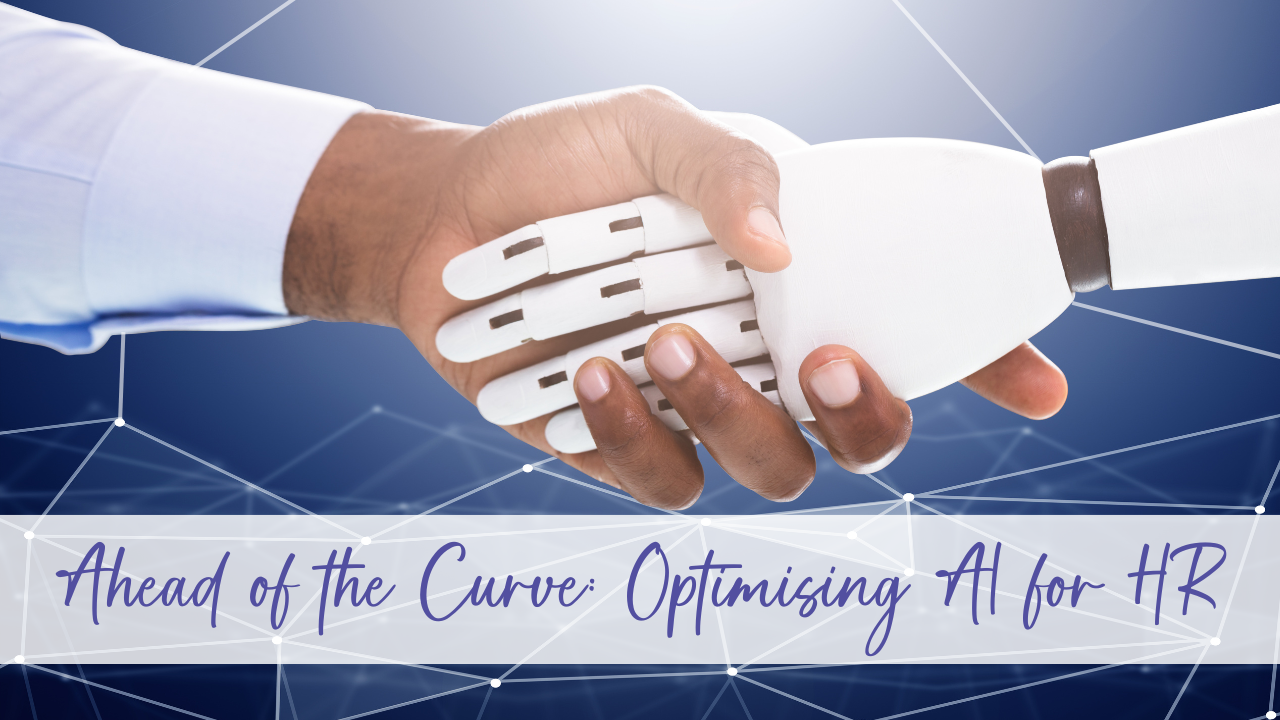Drop off your CV
We serve the global HR community through our offices located in Delhi, Hong Kong, London, New York, São Paulo and Singapore and have placed HR leaders in over 30 countries.
I recently wrote a blog exploring the various innovative tools and technologies that are tra...

I recently wrote a blog exploring the various innovative tools and technologies that are transforming HR. Well, we are not done with that yet! Before continuing with reading this piece, I highly suggest you read that first blog here.
I aim to build off my last piece as we explore Artificial Intelligence more in depth and maybe help reduce the stigma surrounding the fear of AI taking over jobs in the foreseeable future.
I recently attended an engaging and informative webinar on the use of ChatGPT in HR hosted by The Shape of Work along with 1600+ HR professionals. The ‘GPT’ stands for Generative Pre-trained Transformer. It is an AI-powered chatbot that uses natural language using predictions based on large language models and can give a humanlike conversational dialogue. Now, some would say that virtual assistants like Alexa, for example, do the same thing. One factor that strongly distinguishes AI from virtual assistants is its ability to retain context.
ChatGPT emerged as the fastest growing platform in the world, taking a mere 5 days to reach its first million users and just 2 months to clock in the first 100 million users. This dwarfs some of the most popular platforms like TikTok which took over 9 months to reach the 100 million mark, and Instagram taking approximately 2.5 years! Despite this accelerated growth, when asked how many of the webinar attendees use ChatGPT extensively in their HR jobs, the response was a straight ‘no’ for a staggering 65% of the audience. According to The Future of Jobs Report from the World Economic Forum (WEF), 69 million jobs will be created over the next 5 years, and 89 million will be eliminated contributing to a global market churn of 23%. The same report suggests that specialized roles in AI are estimated to grow by up to 35%. What this roughly translates into is that although AI might not take over your job in the near future, a person who knows how to use it well might. It makes sense too because why would an employer not want to onboard a professional who can get the backend, repetitive, and mundane work done in a comparably miniscule amount of time and focus on work that actually matters? With projected growth in the field as mentioned above, it is crucial for HR professionals to be involved with AI to stay ahead of the curve.
The first and most important step towards utilizing ChatGPT to obtain the desired outcome is to use high-quality prompts. One splendid analogy that was shared during the webinar was to treat AI as an intern sitting next to your desk, where the quality of your instruction will notably influence the quality of the output received. Using overly broad instructions are just going to result in the intern getting confused and not be able to provide high-quality results. On the other hand, a clear, focused, and relevant set of directives have a much higher chance of producing an output that is more personalized and closer to your needs. Similarly, ChatGPT prompts can range from being pretty useless in terms of utilizing the true potential of AI to highly effective ones. Let us look at a few examples of prompts across all levels:
2. Average – ‘What are some good employee retention strategies?’
To further improve upon the results being put forward by the chat bot, a highly effective course of action is to give it a persona.
3. Good – ‘I want you to be a senior Learning & Development professional associated with a retail banking organization. How would you address a prominent skills gap in your front office workforce to ensure higher customer satisfaction?’
AI can be utilized for a host of tasks within the HR function, such as preparing various kinds of document templates such as job descriptions, leave policies, or resume summaries, essentially cutting down a lot of manual work that goes into such repetitive tasks. Along similar lines are generative AI programs like Dall-E, Midjourney, and Canva, which can create various forms of graphics and art from natural language which can be used for employer branding purposes.
There are some things to be wary of while exploring this relatively new piece of technology, though. It is crucial to remember that the knowledge cutoff for ChatGPT is September 2021 and hence it does not know much about the events post the cutoff date. At times it can present outdated information, and even information that is factually incorrect. Another aspect to keep in mind is that it does not cite sources. It is thus recommended not to use the tool for conducting and writing research papers since citations and references carry significant weightage in academic writing.
In conclusion, AI and ChatGPT have immense potential to revolutionize the HR industry by automating repetitive tasks and providing valuable insights. HR professionals must embrace this technology to stay ahead of the curve, while also being cautious of its limitations. By using effective prompts and integrating AI into their daily tasks, HR professionals can unlock new levels of efficiency and productivity, ensuring a competitive edge in the ever-evolving world of work.
If you have enjoyed this blog and would like to speak more on the subject of Artificial Intelligence in HR, please feel free to reach out. Furthermore if you are a HR professional looking to hire or are looking for your next move within the HR space, contact Pranjal Kumar via LinkedIn or at pku@elliottscotthr.com.